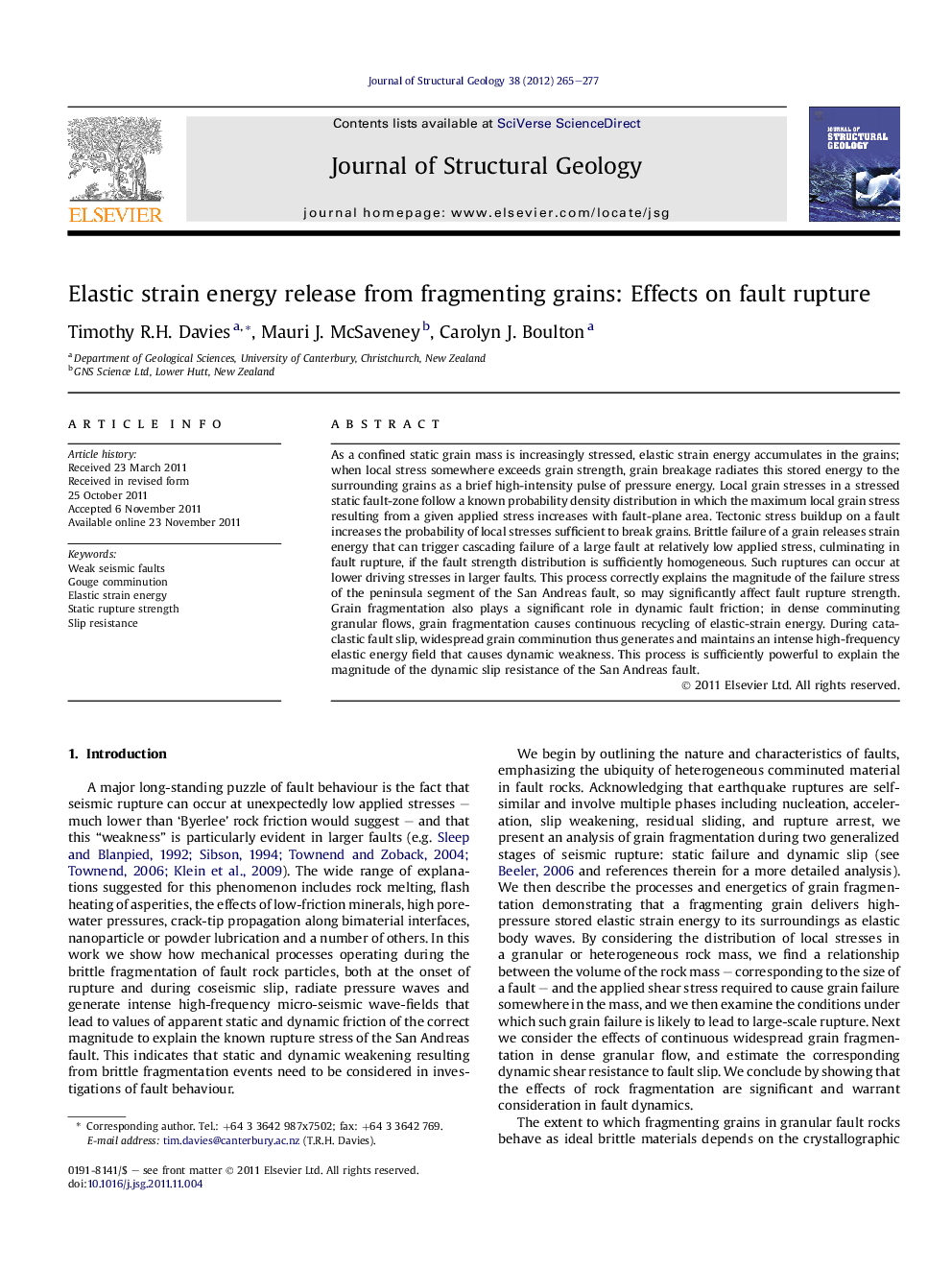| کد مقاله | کد نشریه | سال انتشار | مقاله انگلیسی | نسخه تمام متن |
|---|---|---|---|---|
| 4733282 | 1640539 | 2012 | 13 صفحه PDF | دانلود رایگان |

As a confined static grain mass is increasingly stressed, elastic strain energy accumulates in the grains; when local stress somewhere exceeds grain strength, grain breakage radiates this stored energy to the surrounding grains as a brief high-intensity pulse of pressure energy. Local grain stresses in a stressed static fault-zone follow a known probability density distribution in which the maximum local grain stress resulting from a given applied stress increases with fault-plane area. Tectonic stress buildup on a fault increases the probability of local stresses sufficient to break grains. Brittle failure of a grain releases strain energy that can trigger cascading failure of a large fault at relatively low applied stress, culminating in fault rupture, if the fault strength distribution is sufficiently homogeneous. Such ruptures can occur at lower driving stresses in larger faults. This process correctly explains the magnitude of the failure stress of the peninsula segment of the San Andreas fault, so may significantly affect fault rupture strength. Grain fragmentation also plays a significant role in dynamic fault friction; in dense comminuting granular flows, grain fragmentation causes continuous recycling of elastic-strain energy. During cataclastic fault slip, widespread grain comminution thus generates and maintains an intense high-frequency elastic energy field that causes dynamic weakness. This process is sufficiently powerful to explain the magnitude of the dynamic slip resistance of the San Andreas fault.
► Forces caused by fragmenting grains are large enough to affect fault rupture mechanics.
► Fragmenting grains generate a high-frequency MPa–GPa elastic wave-field in shearing fault gouge.
► This reduces effective stress in the gouge, reducing dynamic frictional resistance to shear.
► Low applied stress can cause high local stress somewhere in a large fault, starting a chain reaction.
► Analysis of shear resistance in comminuting gouge matches field data for fault rupture stress.
Journal: Journal of Structural Geology - Volume 38, May 2012, Pages 265–277